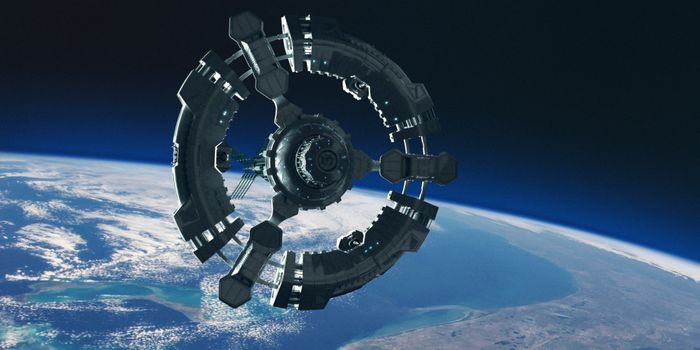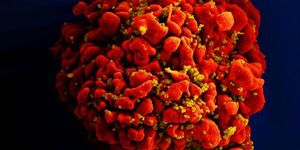Canadian microbes could give scientists a blueprint for lifeforms on the Red Planet, and possibly elsewhere
New research from McGill University has discovered alive and active microbes in Canadian permafrost that could provide a blueprint for the kinds of life forms that might have once existed, or might currently exist, on the planet Mars. The study was published in The ISME Journal where researchers discuss the previously unidentified microbes found near Lost Hammer, Canada. This study is compelling because the water at Lost Hammer most closely resembles conditions on the Red Planet—extremely salty (approximately 24% salinity), very cold (approximately -5°C/23°F), and an almost oxygen-free environment (less than 1ppm dissolved oxygen). For context, fresh water typically contains less than 1% of salt.
The study was led by Lyle Whyte of the Department of Natural Resource Sciences at McGill University, who is also a co-author on the study. Using state-of-the-art genomic tools and single cell microbiology methods, Whyte and the team were able to both identify and characterize the novel and active microbial community in this distinctive spring. However, both finding the microbes and then sequencing both their DNA and mRNA proved to easier said than done.
"It took a couple of years of working with the sediment before we were able to successfully detect active microbial communities," explains Elisse Magnuson, a PhD student in Whyte's lab, and the first author on the paper. "The saltiness of the environment interferes with both the extraction and the sequencing of the microbes, so when we were able to find evidence of active microbial communities, it was a very satisfying experience."
Once the research team was able to isolate and sequence the DNA from the spring communities, this allowed them to reconstruct genomes from approximately 110 microorganisms, the majority of which have never been seen before. Through these reconstructed genomes, the team was able to determine how such organisms survive, and even thrive, in this unique extreme environment. This ultimately acted as a blueprint for potential life forms in similar environments.
"The microbes we found and described at Lost Hammer Spring are surprising, because, unlike other microorganisms, they don't depend on organic material or oxygen to live," adds Whyte. "Instead, they survive by eating and breathing simple inorganic compounds such as methane, sulfides, sulfate, carbon monoxide and carbon dioxide, all of which are found on Mars. They can also fix carbon dioxide and nitrogen gasses from the atmosphere, all of which makes them highly adapted to both surviving and thriving in very extreme environments on Earth and beyond."
The microorganisms identified in this study are commonly referred to as extremophiles, which are organisms capable of surviving in extreme environments, such as hot springs or hydrothermal vents at the bottom of the ocean. While this study could be used a blueprint for life forms on Mars, it could also serve the same purpose for finding life elsewhere, such as Jupiter’s moon Europa or Saturn’s largest moon Titan. Currently, NASA’s Perseverance Rover in searching for past life within Jezero Crater on Mars.
What further discoveries will be made regarding extremophiles? Only time will tell, and this is why we science!
As always, keep doing science & keep looking up!
Sources: The ISME Journal, Ultimate Aquarium Services, National Ocean Service, PBS News Hour









